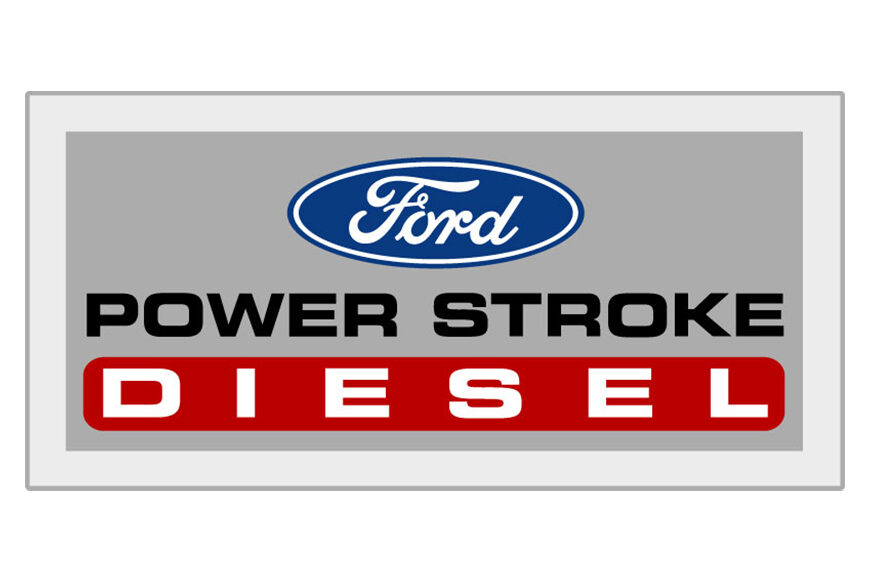- November 12, 2024
- By Tess
- In Diesel, Powerstroke
- Tags Diesel Engine, Ford, Ford Powerstroke, Powerstroke
- 388
- 0

The Ford Powerstroke engine series has become synonymous with reliability, power, and American engineering excellence in the world of diesel engines. Since its debut in the early 1990s, the Powerstroke has continually evolved to meet the needs of truck owners, businesses, and fleets. In this article, we’ll explore the history and development of Ford’s Powerstroke diesel engines, detailing the changes and innovations that have made it a legend in the automotive industry.
In 1994, Ford launched the first Powerstroke engine, a 7.3-liter turbo-diesel V8 designed in partnership with Navistar International. This engine was revolutionary for its time, bringing significant improvements in power and durability over previous diesel engines.
Electronic Fuel Injection: The 7.3L Powerstroke introduced electronic fuel injection, a groundbreaking feature for diesel engines at the time. This allowed for more precise fuel delivery, boosting both performance and efficiency.
Reliability: The 7.3L became known for its legendary reliability, with some engines surpassing 500,000 miles with proper maintenance.
Towing Power: With an output of 210 horsepower and 425 lb-ft of torque, the 7.3L Powerstroke made Ford trucks the ideal choice for towing and heavy-duty work.
The 7.3L Powerstroke quickly gained a loyal following, establishing the Powerstroke brand as a powerhouse in the diesel world. Despite its eventual discontinuation, the 7.3L remains a favorite among enthusiasts for its robustness and longevity.
In 2003, Ford introduced the 6.0L Powerstroke, designed to comply with stricter emissions regulations. The 6.0L featured several technological advancements aimed at boosting power and reducing emissions, but it also came with some reliability challenges.
Higher Horsepower and Torque: The 6.0L offered up to 325 horsepower and 570 lb-ft of torque, a significant increase from the 7.3L.
Variable Geometry Turbocharger (VGT): This was the first Powerstroke to use a VGT. This allowed the turbocharger to adjust itself for better performance across different RPM ranges.
EGR System: The 6.0L introduced an Exhaust Gas Recirculation (EGR) system to reduce nitrogen oxide emissions. While effective for emissions, it led to some common reliability issues, such as head gasket failures and EGR cooler malfunctions.
Though the 6.0L was a step forward in power, it faced criticism due to frequent mechanical issues. This lead to mixed feelings among Powerstroke enthusiasts. Ford and Navistar parted ways after this engine, with Ford taking control of the Powerstroke’s future design and development.
Following the 6.0L, Ford released the 6.4L Powerstroke in 2008. The 6.4L was designed to meet even stricter emissions standards and address the reliability concerns of its predecessor.
Twin Turbo Setup: The 6.4L Powerstroke featured a twin-turbo system with a smaller high-pressure turbo and a larger low-pressure turbo. This provided improved throttle response and reduced turbo lag.
Diesel Particulate Filter (DPF): The 6.4L was the first Powerstroke to use a DPF to trap and reduce particulate emissions, aligning with environmental regulations.
Performance and Drawbacks: Producing up to 350 horsepower and 650 lb-ft of torque, the 6.4L offered substantial power, but it was fuel-thirsty and had some mechanical issues, particularly with the DPF system.
Due to high maintenance costs and fuel inefficiency, the 6.4L had a relatively short production run. Ford sought a more refined solution for their next generation.
In 2011, Ford introduced the 6.7L Powerstroke, marking the first in-house design for the Powerstroke series. This decision allowed Ford to have complete control over the design, engineering, and future advancements of the engine.
In-House Development: Ford’s engineers designed the 6.7L from the ground up, focusing on performance, reliability, and compliance with emissions standards.
Scorpion Engine Design: The engine was nicknamed “Scorpion” due to its unique layout, with the turbocharger mounted between the cylinder banks. This design reduced turbo lag and improved efficiency.
Selective Catalytic Reduction (SCR): To meet emissions regulations, the 6.7L included an SCR system, which uses diesel exhaust fluid (DEF) to reduce nitrogen oxide emissions.
Modern Power Output: Over the years, Ford has continually updated the 6.7L Powerstroke, with recent models producing over 475 horsepower and 1,050 lb-ft of torque.
The 6.7L Powerstroke has proven to be one of Ford’s most successful engines, balancing power, efficiency, and reliability. With this engine, Ford has cemented its reputation in the diesel market, providing a powerful option for both personal and commercial truck owners.
As environmental regulations continue to evolve, Ford is likely to innovate further to improve fuel efficiency and reduce emissions without sacrificing power. Hybrid technology and advanced emissions systems may play a role in the future of the Powerstroke.
The Ford Powerstroke series has been a journey of innovation, with each engine generation addressing the demands of its time. From the legendary 7.3L to the powerful and refined 6.7L, the Powerstroke legacy reflects Ford’s commitment to delivering high-performance diesel engines. For diesel enthusiasts and truck owners alike, the Powerstroke remains a symbol of durability and strength. Need help with your Powerstroke? Contact us today!
Sources
– “The History of Ford Powerstroke: A Legacy of Diesel Innovation.” Powerstroke Products, July 12, 2024
– Ford Motor Company official website (for specifications and historical information)





